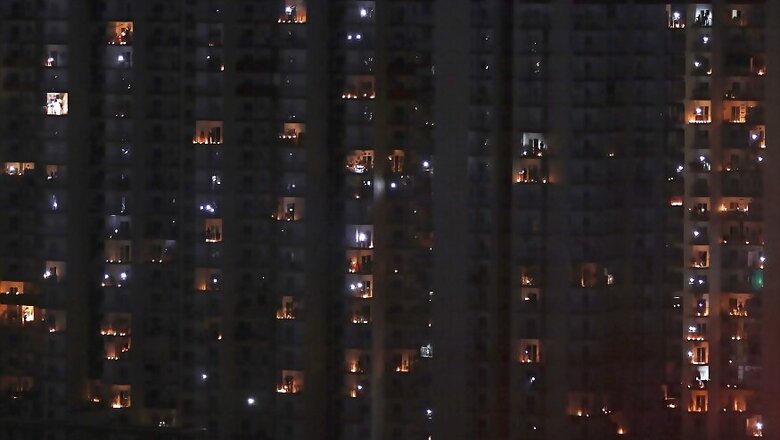
views
On December 26 last year, India’s Power System Operation Corporation Ltd. (POSOCO) faced a unique challenge: to mitigate the impact of a solar eclipse on the electricity grid.
It was expected that the solar eclipse would disrupt the generation of solar energy due to blackout of the sun, and lead to changes to the electricity demand pattern (due to people changing habits related to cooking, bath, etc).
Since its occurrence was known in advance, POSOCO had considerable time to prepare, by carrying out extensive projections based on a number of natural and technical factors, as well as the lessons from other countries during similar events. And through a series of operational planning steps during the solar eclipse, it was successfully able to ensure grid stability.
Four months later, the agency was called to action again and this time for an event for which they had 48-60 hours to plan. As part of public measures to respond to the ongoing Coronavirus crisis in the country, Prime Minister Narendra Modi made a call to citizens on April 3 to switch off lights in their homes for a period of nine minutes at 9 pm on Sunday, April 5, and light lamps and candles.
Electricity supplied to the grid from conventional and renewable sources needs to match power demand and supply at any given point of time. A ramp event refers to large or rapid changes in power which can arise as a result of variations in the generation and/or load on the power system, and which needs to be compensated in real-time for maintaining the generation-load balance and system frequency. Changing the input or output of a power plant through the process of ramping up and ramping down comes at the cost of efficiency and resources.
Let us remember that the grid is already adjusting to changes in electricity consumption. The nationwide lockdown has led to a considerable reduction in the country’s peak electricity demand with significant reduction in commercial and industrial power demand with a simultaneous increase in residential power consumption.
On April 4, POSOCO issued an advisory to the National Load Despatch Centre (NLDC) and all regional and state load despatch centres (RLDCs/SLDCs), discoms, transmission licensees and generators providing guidance on how to respond to the expected reduction in electricity demand on April 5.
Based on its calculations, the agency expected aggregated demand to drop and recover (9 minutes later) in a 2-4 minute window by an estimated 12-14 gigawatt (GW). Detailed plans were drawn for generation scheduling, frequency control and voltage control measures.
By all measures, this was unprecedented and led to questions about whether the Indian electricity grid can manage such a load crash and recovery. The Ministry of Power seemed confident that switching off residential lights would not lead to grid instability and voltage fluctuations that could harm electrical appliances.
Nonetheless, further guidance was provided to domestic consumers, advising them to keep their refrigerators, air conditioners, and fans on at 9pm, to mitigate the risk of grid collapse. Additionally, a decision was made to conserve hydropower generation to manage the evening peak, so that it can be relied upon during the 9pm event.
Other key steps discussed were the ramping up and down of hydropower and gas generation, and cutting off wind power beyond a frequency of 50.2Hz (Hertz).
On Sunday evening, while the rest of the country got ready for the event, power sector managers across the country were at work. POSOCO records show that during the event, the recorded reduction in all-India demand was close to 32 GW – more than double of what had been forecast.
That such a significant load crash and recovery was managed, was probably due to the additional flexibility contributions by thermal plants and wind generation, in addition to hydropower and gas ramping down and up.
India’s lights out at 9pm was a test for the grid operator and transmission networks of the country. There is much excitement about how this event augurs well for India’s renewable energy (RE) based future.
However, we should remember that April 5 was a planned experiment. Fluctuations in wind and solar energy generation almost never occur at a national scale or with clear or adequate forewarning. The learning from the April 5 event for India’s RE transition lie in investing in better forecasting and planning technologies at the regional, state and national level.
This will aid the ramping up and ramping down of generation to ensure the most efficient utilization of resources. On the demand side, POSOCO’s calculations relied on estimates of the number of urban and rural consumers, their average load and average reduction. We must get better at understanding and estimating demand, and here too, improved technology (for example, smart meters) can help improve load information.
Another important aspect that merits highlighting is the collaboration between national and state-level agencies, which ensured better information sharing, analysis and real-time decision making to ensure that the load crash and recovery was managed every second of the event. The coordination between entities responsible for the grid is a positive sign for India’s RE trajectory.
The risks were high, but the challenges were overcome by meticulous planning and execution by national and state agencies. For the second time in four months, the country’s grid operators had to mitigate the adverse impacts of a significant change in electricity demand and supply. The lessons of this experiment for India’s clean energy future lie in focusing on fine-tuning granular demand monitoring and improving forecasting to aid greater RE integration in the future.

















Comments
0 comment